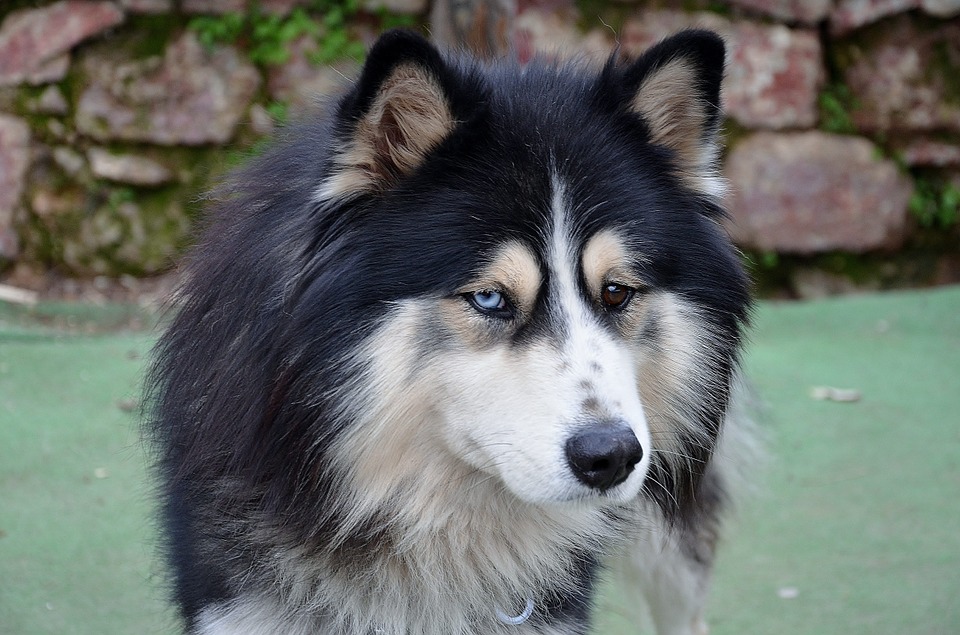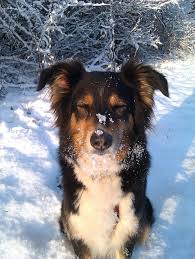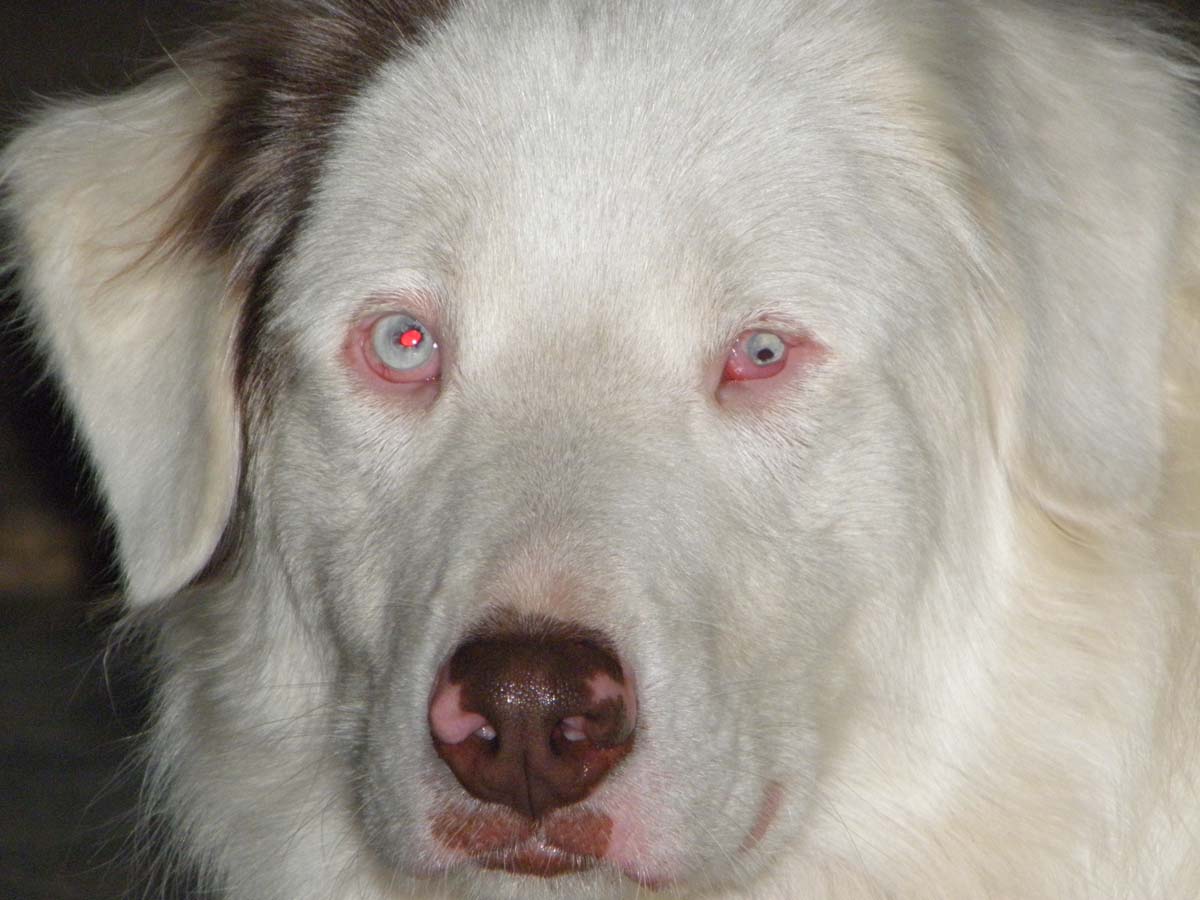Australian Shepherd Husky Mix
The Australian Shepherd Husky Mix, is a hybrid mix breed dog created by breeding the Australian Shepherd and the Siberian Husky. Both of these are kind and intelligent dogs. It is always hard to tell what a mixed breed dog will be like, but if you continue reading below we will dive into this hybrid deeper. Continue reading below to see pictures, videos, and learn more about the beautiful Australian Shepherd Husky Mix.
While we really recommend that you acquire all animals through a rescue, we understand that some people might go through a breeder to get their Australian Shepherd Husky Mix puppy. That is, if they have any for sale. Always screen your breeders as much as possible to ensure that you are getting as high a quality dog as is possible.
If you are interested in helping animal rescues raise money, please play our quiz. Each correct answer donates to help feed shelter animals.
Here are some pictures of the Australian Shepherd Husky Mix
Australian Shepherd Husky Mix History
As mentioned above, all hybrid or designer dogs are tough to get a good read on as there isn’t much history to them. Breeding specific dogs like this has become common in the last twenty years or so even though I am sure that this mixed breed found it’s share of dogs to the shelter due to accidental breeding. We will take a closer look at the history of both parent breeds below. If you are looking at breeders for new, designer dogs please beware of Puppy Mills. These are places that mass produce puppies, specifically for profit and don’t care at all about the dogs. Please sign our petition to stop puppy mills.
The Siberian Husky is a medium size working dog breed that originated in north-eastern Siberia, Russia. The breed belongs to the Spitz genetic family and was originally bred to pull sleds over long distances rather quickly. They are known to be escape artists that will dig themselves out of the strongest fence. Being that they were bred to pull things you can imagine that they aren’t the easiest dogs to walk.
The Australian Shepherd has a rather vague past and lineage. For this reason, it’s name is a bit misleading. The Aussie was actually called the following prior to it’s current name - Spanish Shepherd, Pastor Dog, Bob-Tail, New Mexican Shepherd, California Shepherd, and Australian Shepherd. There are a lot of folks who think that the breed originated from the Basque region in Spain where they were used by shepherds. The thought is that those shepherds emigrated to the West Coast of the United States via Australia and brought their dogs with them. While the origins aren’t totally agreed upon, there is agreement that it developed in western North America in the 19th and early 20th centuries. One theory as to where they got their name is that they were named for the imported sheep that they herded.
The Australian Shepherd isn’t as affected by altitude as much as other herding breeds so it became a well known and loved sheep herder in the Rocky Mountains. The original breeders were Ranchers in Boulder, Colorado, who then began to sell and distribute the dogs all over the West.
Back when dogs such as this were used primarily as working stock, shepherds were much more interested in dogs' working abilities than their appearance. As a result, over time, shepherds interbred dogs that they believed would produce better workers for the given climate and landscape. The landscape played a large role in how the dogs looked, In the eastern U.S., terrain and weather conditions were similar to that of Europe. Europe is where most of those breeds came from, so the existing breeds and their offspring worked well there.
However, different dogs were needed In the American West, as the conditions were much different from the East. Spanish flocks of sheep, known as the Churra were introduced for food. The shepherds brought over Spanish dogs that proved capable for their job in the wild and dangerous territory. These dogs were highly valued for their ability to herd and protect from predators on the open range. Selective breeding for many generations focused on aspects of the dog that enabled it to function as an effective stockdog in the American West. It had to handle severe weather; have plenty of speed, athleticism, energy, and endurance; and be intelligent, flexible, and independent; while remaining obedient.
You can expect some of these same traits to show in the Australian Shepherd Husky Mix.
Awesome videos of Australian Shepherd Husky Mix puppies
Australian Shepherd Husky Mix Size and Weight
AUSTRALIAN SHEPHERD
Height: 18 - 23 inches at the shoulder
Weight: 35 - 75 lb.
Lifespan: 13-15 years
HUSKY
Height: 20 - 23 inches at the shoulder
Weight: 35 - 60 lb.
Lifespan: 12-15 years
Australian Shepherd Husky Mix Personality
Trying to predict the personality traits of hybrid dog isn’t always that easy to do. Sometimes the mix takes more from one of the parent breeds than the other. Both the Husky and the Australian Shepherd are very loyal, alert, independent, intelligent, brave, and social. Both of these dogs are very high energy and aim to please. The best thing you can do for any puppy or young dog is to socialize it as well as possible. This can’t be stressed enough as socialization is extremely important. It also can’t be stressed enough that this mix will need and require lots of exercise. It will require someone who isn’t a “couch potato,” but rather someone who likes to go for long walks and preferably hike. A tired dog is a good dog.
Australian Shepherd Husky Mix Health
All dogs have the potential to develop genetic health problems as all breeds are susceptible to some things more than others. However, the one positive thing about getting a puppy is that you can avoid this as much as possible. A breeder should absolutely offer a health guarantee on puppies. If they won’t do this, then look no more and don’t consider that breeder at all. A reputable breeder will be honest and open about health problems in the breed and the incidence with which they occur. Health clearances prove that a dog has been tested for and cleared of a particular condition.
Do not purchase a puppy from a breeder who cannot provide you with written documentation that the parents were cleared of health problems that affect the breed. A careful breeder and one who truly cares about the breed itself, screens their breeding dogs for genetic disease and breed only the healthiest and best-looking specimens. One of the most common health problems with dogs is obesity. Keeping this under control is your responsibility.
Australian Shepherd Husky Mix Care
Both of these dogs have long hair and quite frankly require a lot of grooming. They were both bred to withstand harsh conditions so have long hair that will shed and requires brushing. Get ready to invest in a good vacuum if you want to keep your floors clean! Give them baths as needed, but not so much that you dry out their skin. Never tie your dog up outside - that is inhumane and not fair to him. The Husky can be a great escape artist so if left in the backyard (temporarily of course,) they will be tough to keep in. You will need to make sure the fence is extremely secure and buried a couple of feet in the ground. Plan on taking them for extremely long walks and hikes to keep their energy level down. A tired dog is a good dog.
Australian Shepherd Husky Mix Feeding
A lot of times diet is done on a per-dog basis. Each one is unique and has different dietary requirements. Most dogs in the U.S. are overweight. A mix like this one that is prone to hip and elbow dysplasia should really be on fish oil and glucosamine and chondroitin supplements as soon as possible.
Overfeeding any dog is not a good idea as that can really exacerbate health problems such as elbow and hip dysplasia.
A good diet to look into is Raw Food Diet. A raw food diet will be especially good for the Wolf background.




